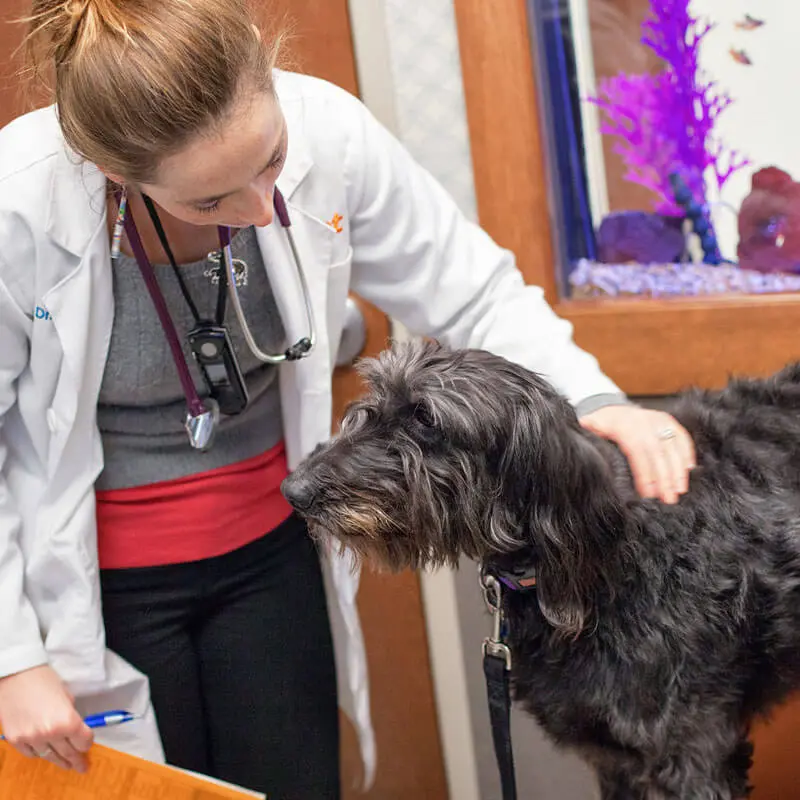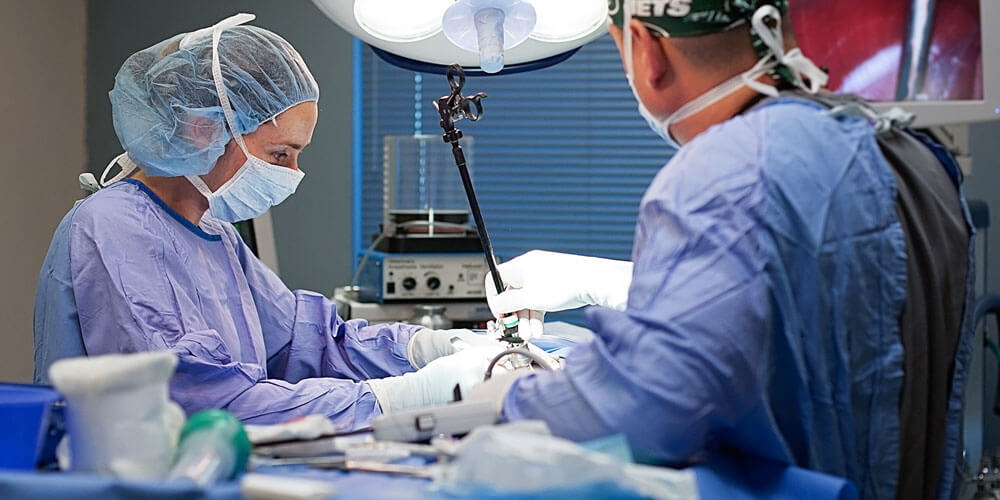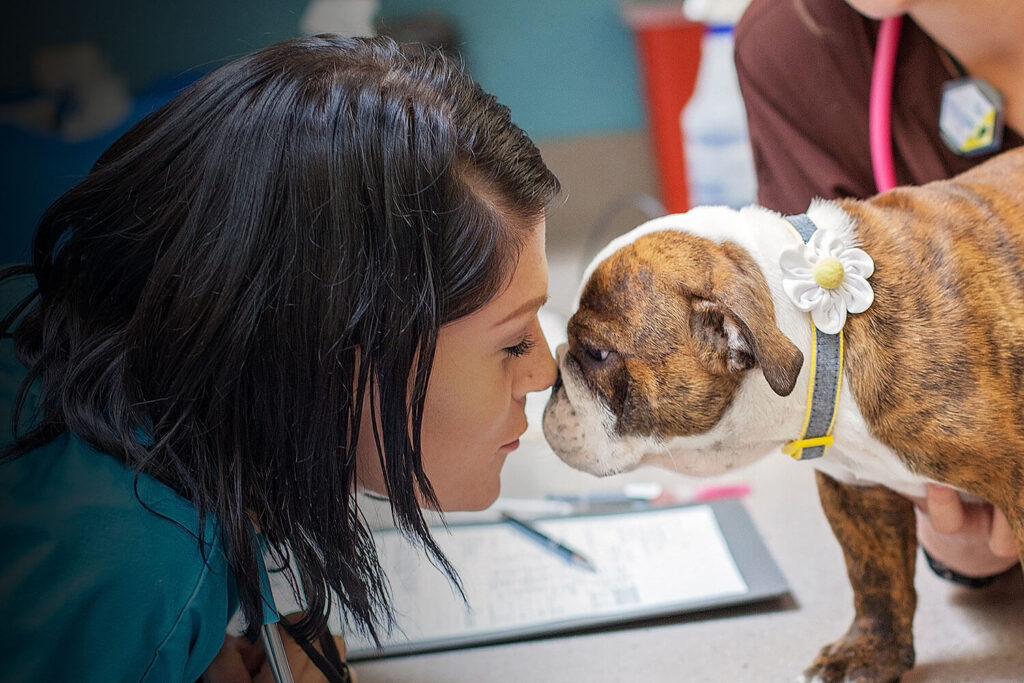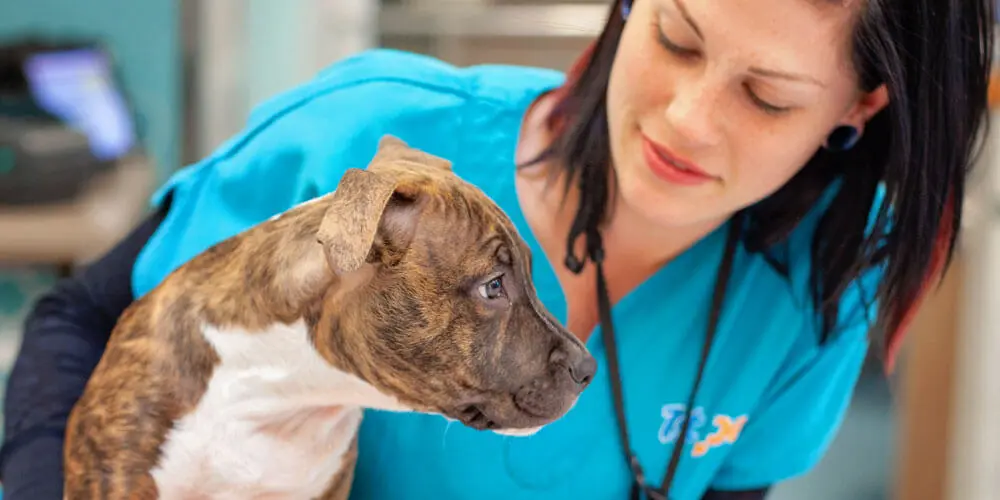DEPARTMENTS
TREATMENT OPTIONS
Minimally Invasive Surgery
Our surgeon, Dr. Dan Guastella, performs a wide variety of surgical procedures every day with the latest surgical equipment and techniques.
What is Laparoscopy?
Laparoscopy is a surgical technique used to enter and explore the abdominal cavity with specialized equipment through very small incisions, instead of a traditional large incision. A thin lighted tube (telescope), attached to a high definition camera, is inserted into the abdomen thru these small incisions and organs are visualized and even magnified to enhance diagnostic capabilities. Numerous types of surgeries can be performed with laparoscopy that, in the past, were traditionally performed as “open” surgical procedures with large incisions.
Laparoscopic procedures
- Cystotomy (bladder surgery)
- Prophylactic incisional gastropexy (to prevent gastric dilatation volvulus, or ‘bloat’)
- Enterotomy (intestinal surgery)
- Gastrotomy (stomach surgery)
- Liver biopsy
- Pancreatic biopsy
- Kidney biopsy
- Ovariectomy & ovariohysterectomy (spay)
What is Arthroscopy?
The term “arthro-” in medical terms refers to articulations, or joints. Therefore, arthroscopy is a diagnostic and therapeutic tool we can use to look into joints such as knees, elbows, & shoulders. Joints in dogs and cats can be very intricate and small. Arthroscopy allows us to see them magnified and in high definition to better diagnose and treat certain orthopedic (bone and joint) conditions. Arthroscopy has become a mainstay to treat human and equine orthopedic conditions.
Arthroscopic procedures
- Cranial cruciate ligament rupture
- Meniscectomy
- Elbow dysplasia
- Fragmented medial coronoid process
- Osteochondritis (OCD)
- Biceps tenosynovitis
What is Thoracoscopy?
The thorax is a medical term referring to the chest cavity; therefore, thoracoscopy is a method of performing minimally invasive diagnostic and therapeutic chest surgery. Traditional chest surgery (usually involving the heart or lungs) can be a very painful experience. Thoracoscopy allows us to perform certain procedures through much smaller and less painful incisions than open chest surgery. This can significantly decrease hospital time and recovery for your pet.
Thorascopic procedures
- Pericardial window for pericardial effusion (fluid build-up around the heart)
- Lung lobectomy (removal of a lung lobe)
- Thoracic exploration for plant foreign material
- Thoracic duct ligation for chylothorax
What is Cystoscopy?
In select group of female canine patients, diagnostic cystoscopy can be performed. Cystoscopy is a procedure in which a camera can be inserted in the urethra and bladder for diagnostic purposes and to perform biopsies without any incisions at all! Scottish Terriers are a breed of dog that are particularly prone to bladder cancer. Cystoscopy is highly recommended as a screening technique in this particular breed and in other breeds which have a high suspicion of cancer in the bladder.
The benefits of minimally invasive surgery
Here are some of the benefits to minimally invasive laparoscopy, thoracoscopy, and arthroscopy:
- Allows for direct visualization of many organs without open surgical intervention
- Non-invasive approach is less traumatic on patient and owner
- High definition visualization of anatomy
- Generally safer than open procedures and pets have faster recovery
- Shorter hospital stays
- Small incisions
- Quick recovery time
- Less pain
- Less scarring
- Lower risk of infection
- Reduced blood loss




